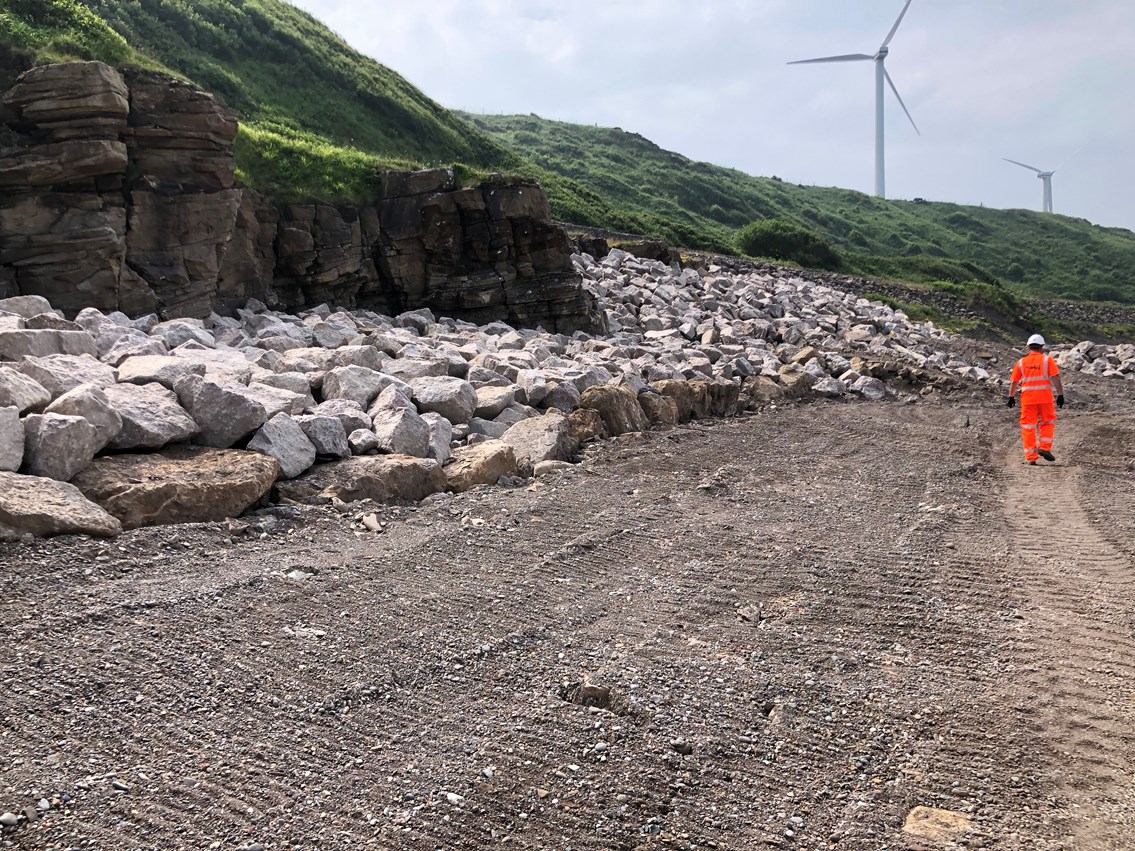Monday 2 Jul 2018
Network Rail tackles the tides in Cumbria
- Region & Route:
- | North West & Central
Work is taking place along the Cumbrian coast to protect the railway from the seas which constantly batter the line.
As part of the Great North Rail Project, sections of sea defences between Parton and Harrington on the Cumbrian coastline are being renewed and replaced. This keeps the railway open for important passenger and freight services.
Rock armour, in the form of 20,000 tonnes of quarried stone and boulders, is being placed between the track and the beach to lessen the force of the waves as they hit the shoreline.
Further along the coast in Flimby, ‘sand breakers’ have been installed to prevent a build-up of sand collecting under a railway bridge and blocking access to the beach. The breakers have been designed and installed with tidal and wind patterns in mind, meaning local people can access the shore all year round.
Jim Syddall, works delivery programme director for Network Rail, London North Western route said: “Network Rail is committed to ensuring the safety and reliability of the country’s railway and this includes protecting it from damage caused by the sea . The work is essential to help ensure the long-term future of this vital coastal line.”
Trudy Harrison MP, said: “These essential maintenance works being carried out by Network Rail along one of the most exposed stretches of the Cumbria Coast Line will help to protect this most vulnerable, but critically important section of the railway.
“Government is investing £61bn in rail, I look forward to new passenger and a more frequent service. These engineering works will ensure we have a track for the trains to run on and a service we can rely on.”
The rock armour sites are next to the Lower Solway Firth, which is one of world’s most important estuary and mudflat habitats. Coastal and wading birds including turnstones, oystercatchers, curlews, gulls and plovers all nest in the area.
Everyone working on the project is given the training they need to identify any wildlife they might come across while they work, so they can record sightings and then report to one of our environmental specialists.
Our in-house ecologists also provide identification checklists and awareness briefings and daily checks of the site during nesting season mean we can keep disturbance to a minimum until birds have fledged.
The work on the coastline forms part of Network Rail’s Railway Upgrade Plan to provide a bigger, better, more reliable railway for passengers.
Contact information
Passengers / community members
Network Rail national helpline
03457 11 41 41
Latest travel advice
Please visit National Rail Enquiries
Journalists
Network Rail press office - North West & Central Region
0330 854 0100
NWCmediarelations@networkrail.co.uk
About Network Rail
We own, operate and develop Britain's railway infrastructure; that's 20,000 miles of track, 30,000 bridges, tunnels and viaducts and the thousands of signals, level crossings and stations. We run 20 of the UK's largest stations while all the others, over 2,500, are run by the country's train operating companies.
Usually, there are almost five million journeys made in the UK and over 600 freight trains run on the network. People depend on Britain's railway for their daily commute, to visit friends and loved ones and to get them home safe every day. Our role is to deliver a safe and reliable railway, so we carefully manage and deliver thousands of projects every year that form part of the multi-billion pound Railway Upgrade Plan, to grow and expand the nation's railway network to respond to the tremendous growth and demand the railway has experienced - a doubling of passenger journeys over the past 20 years.
Follow us on Twitter: @networkrail
Visit our online newsroom: www.networkrailmediacentre.co.uk

